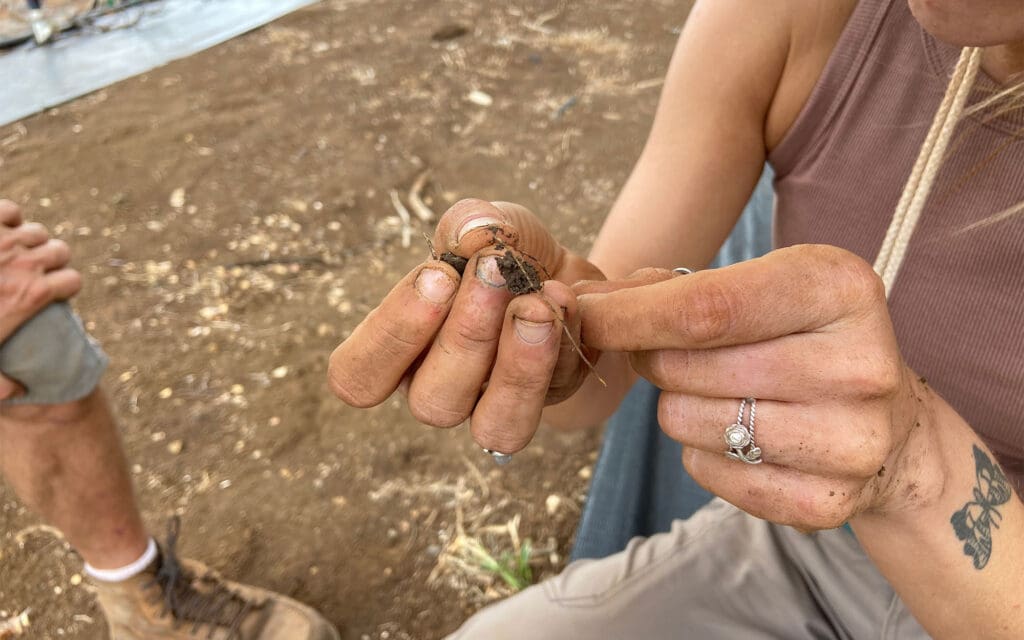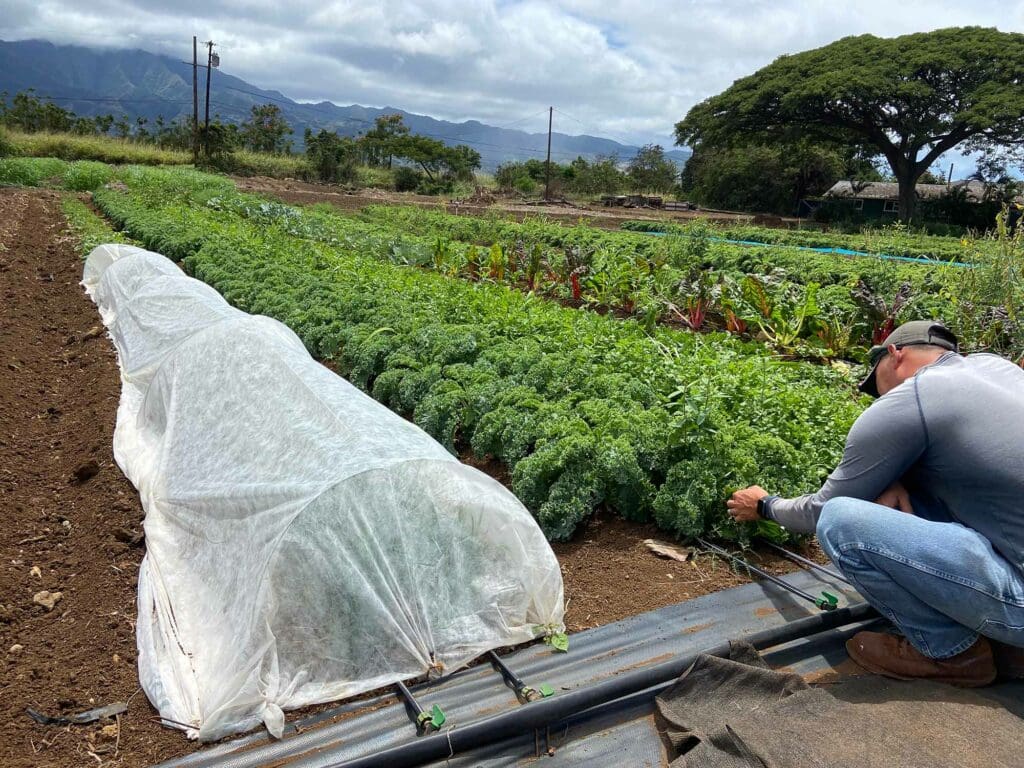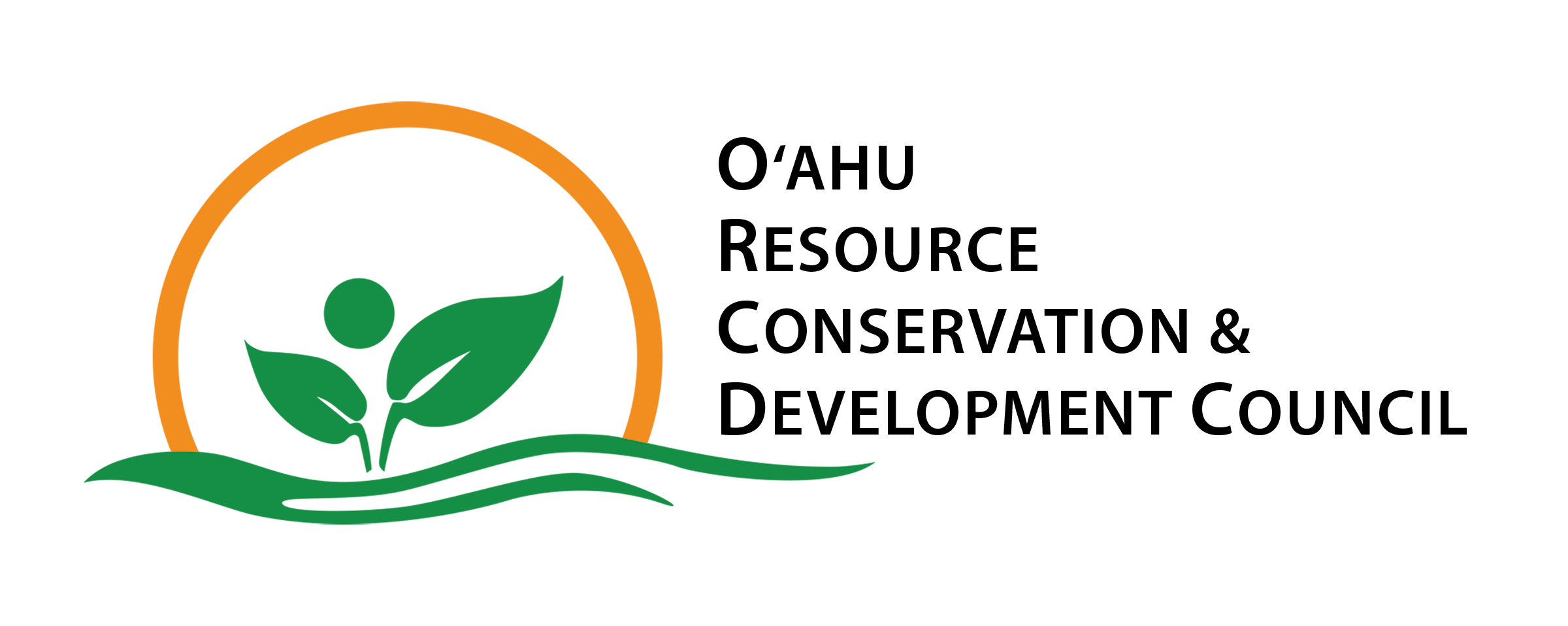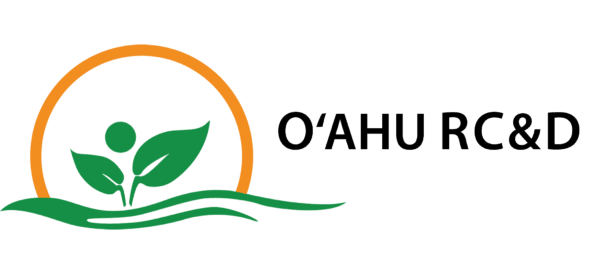Fertigation with Liquid Tankage and Compost Tea
Soil Health Practice Demonstration
at Diamond Island Farm
Operation Background:
Diamond Island Farm is located in Waialua. Carey Bonn and his small team grow diversified vegetables and flowers in a market-garden style operation using regenerative practices. They sell to local stores and restaurants as well as through farmers markets.
Until 2016, what is now Diamond Island Farm was a Dole banana plantation. The land was later bought by a developer who backfilled, graded and grubbed the area. The drainage culvert on the property was not properly maintained, causing the northwest side to flood. In the areas where the land has not been brought into production, the soil is heavily compacted. A small, low-lying area of the field is prone to flooding. More recently Carey and his team have removed invasive trees and applied mulch. They have also disced, tilled, and planted cover crop with a Sunn Hemp and Piper Sudan mix.
Diamond Island Farm has Haleiwa silty clay and Wialua silty clay soil types and sees an average of 31 inches of rainfall a year. Their standing nutrient regime is applying bonemeal and compost at a rate of 10 lbs per bed for the first couple of crops before planting. The application is then reduced to 5lbs per bed after a nitrogen reserve is established. No other fertilizer is added during the growing process.
Carey’s primary challenges include pest management, increasing the health of her plants, and managing high water events, as well as managing plant available nitrogen, carbon to nitrogen ratios and ensuring nitrogen cycling.

Carey had soil health tests done in 2022 and learned a number of things, namely that his soil has a high C:N ratio, a high level of biological activity. This means he needs to carefully manage the nitrogen in his soil, using soluble forms that are plant-available. Further, he would benefit from practices that foster nitrogen-fixing microbes, such as planting leguminous cash and cover crops. Finally, if he wants to add carbon amendments to his soil—recommended to sustain its high biological activity—he should be mindful of adding too much at once and add nitrogen at the same time, in order to avoid immobilizing any nitrogen.
Soil Health Goals:
In general, Carey wants to better understand the amount of plant-available nitrogen his crops are getting from his cover crops as well as from organic, biological, and carbon amendments. He also wants to maintain a proper balance of C:N in order to continuously feed the high biological activity in his soil while making sure that the biology is not diverting nitrogen from his crops.
Soil Health Practice: Application of Soluble Nitrogen and Inoculant via Liquid Tankage and Compost Tea
Carey is going to trial fertigating with liquid tankage and compost tea in addition to her regular nutrient management regime. Her goal is to determine whether his plants’ health and yield increase with the addition of a soluble form of nitrogen fertilizer and biological amendments provided by the tankage and compost tea, respectively. He will trial this specifically on his kale crop, for which he hopes to shorten the harvest time to 12 weeks by increasing the nutrient levels of the crop using these biological amendments.

The liquid amendment will contain 1 lb of tankage and 1 ounce of compost tea to 10 gallons of water. To make the mixture he will mix all components in a large 50 gallon drum and aerate the liquid overnight using a 1 horsepower pump and a Venturi siphon injector, powered with a Triple Charge Deep Cycle Marine Storage Battery, an inexpensive solar panel and an AC converter.
At planting time, Carey will apply 50 gal of the mixture for every 1000 square feet of bed.
CTAHR has not determined a recommended application frequency for these amendments. To determine the best application frequency for his operation, Carey will begin by applying the mixture every 3 weeks, and adjust depending on the nitrate levels tested in his soil solution. Carey will measure for nitrate the day after applying the treatment, when the crop is newly planted, and when the crop is mid-way through its growth cycle. He will use Merck Millipore nitrate test strips in 40mm of water to 10mm soil, comparing his results to the recommended percent of nitrogen which is 25ppm. He will use this information and observations of his kale crop in order to optimize the ideal frequency and timing of application.
Materials needed for Compost Tea and Liquid Tankage:
- 50 gallon drum
- Venturi siphon injector ($20)
- Merck Millipore Test Strips ($25)
- Tankage/Bonemeal ($0.50/lb)
- Available at Island Commodities
- Vermicast ($1/qt)
- Available at Nutrien
- Deep Cycle Marine Battery ($100)
- Triple charge storage battery running with a AC converter
- Solar panel ($100)
- Sump pump with 100 mesh filter
- SolVita test ($99)
- Optional – to test for biological activity
One consideration Carey has is how to properly integrate this practice into his existing nutrient management regime and fertilizer program. It will be important for him to make sure he is not adding too much nitrogen to his already-high C:N ratio, and to do that he will need to know how much nitrogen is being added through his regular fertilizer program versus how much nitrogen the new practice will be adding. Taking this into account, over time Carey will be able to develop the best rates of liquid tankage and compost tea for his particular operation.
Monitoring and Updates:
Check back for updates soon.
Note: This material is based upon work supported by the U.S. Department of Agriculture, under agreement number NR2192510002C002. Any opinions, findings, conclusions, or recommendations expressed in this publication are those of the author(s) and do not necessarily reflect the views of the U.S. Department of Agriculture. In addition, any reference to specific brands or types of products or services does not constitute or imply an endorsement by the U.S. Department of Agriculture for those products or services.
Resources and References:
- Using High Nutrient Solution Fertilizers Derived from Local Organic Inputs Extension Bulletin
This project highlights the importance of developing locally-sourced solution fertilizers to reduce reliance on imported fertilizers. It was aimed to help farmers develop cost-effective concentrated nutrient solutions from local materials to be used as fertigation. Various trials were conducted using tankage as a liquid fertilizer with promising results, and a recipe for liquid tankage was developed. - Producing High Nitrogen Liquid Fertilizer for Fertigation Purposes
This extension bulletin was a product of the above project and details the experiments done on nitrogen release from liquid tankage fertilizer under various conditions, including when combined with vermicompost. - Video: Liquid Organic Fertilizer Recipe and Step by Step Instructions
This video by Dr. Amjad Ahmad of CTAHR provides a recipe to produce liquid organic fertilizer, using locally produced tankage and vermicompost, that was developed and tested in field and greenhouse trials. - Nitrogen Fertigation of Organic Tropical Fruit Orchards with Liquid Tankage
This CTAHR Extension handout evaluates the use of tankage for fertigation in a tropical fruit orchard. It includes a recipe, system setup, data on amount of nitrogen produced, and costing information.

